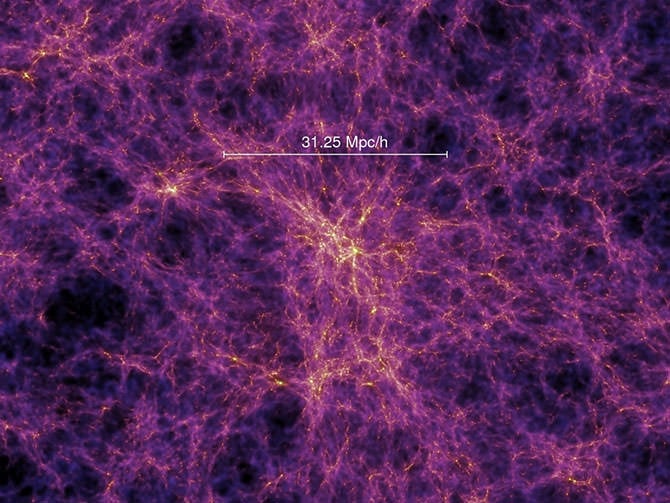When did the first stars and galaxies form in the universe and how brightly did they burn?
Scientists are looking for tell-tale signs of galaxy formation with an experimental payload called CIBER.
NASA
will briefly turn night into day near midnight along the mid-Atlantic coastline on June 4 - seeking answers to illuminate researchers theories about the beginnings of our Universe with the launch of the Cosmic Infrared Background ExpeRiment (CIBER) from NASA's
launch range at the Wallops Flight Facility
along Virginia's eastern shoreline. See viewing map below.
CIBER will blast off atop a powerful four stage Black Brant XII suborbital rocket at 11 PM EDT Tuesday night, June 4. The launch window extends until 11:59 PM EDT.
Currently the weather forecast is excellent.
The public is invited to observe the launch from an excellent viewing site at the NASA Visitor Center at Wallops which will open at 9:30 PM on launch day.
The night launch will be visible to spectators along a long swath of the US East coast from New Jersey to North Carolina; if the skies are clear as CIBER ascends to space to an altitude of over 350 miles and arcs over on a southeasterly trajectory.
Backup launch days are available from June 5 through 10.
[caption id="attachment_102646" align="aligncenter" width="580"]
Launch visibility map for the CIBER payload launch from NASA Wallops, Va, on June 4, 2013 at 11 PM EDT. Credit: NASA[/caption]
"The objectives of the experiment are of fundamental importance for astrophysics: to probe the process of first galaxy formation. The measurement is extremely difficult technically," said Jamie Bock, CIBER principal investigator from the California Institute of Technology
Over the past several decades more than 20,000 sounding rockets have blasted off from an array of launch pads at Wallops, which is NASA's lead center for suborbital science.
The Black Brant XII sounding rocket is over 70 feet tall.
The launch pad sits adjacent to the newly constructed Pad 0A of the Virginia Spaceflight Authority from which the Orbital Sciences
Antares rocket blasted off
on its maiden flight on April 21, 2013.
"The first massive stars to form in the universe produced copious ultraviolet light that ionized gas from neutral hydrogen. CIBER observes in the near infrared, as the expansion of the universe stretched the original short ultraviolet wavelengths to long near-infrared wavelengths today."
"CIBER investigates two telltale signatures of first star formation -- the total brightness of the sky after subtracting all foregrounds, and a distinctive pattern of spatial variations," according to Bock.
[caption id="attachment_102647" align="aligncenter" width="386"]
Preparing the CIBER instrument for flight. The optics and detectors are cooled by liquid nitrogen to -19C (77 K, -312F) during the flight to eliminate infrared emission from the instrument and to achieve the best detector sensitivity. Photo: NASA/Berit Bland[/caption]
This will be the fourth launch of CIBER since 2009 but the first from Wallops. The three prior launches were all from the White Sands Missile Range, N.M. and in each case the payload was recovered and refurbished for reflight.
However the June 4 launch will also be the last hurrah for CIBER.
The scientists are using a more powerful Black Brant rocket to loft the payload far higher than ever before so that it can make measurements for more than twice as long as ever before.
The consequence of flying higher is that CIBER will splashdown in the Atlantic Ocean, about 400 miles off the Virgina shore and will not be recovered.
You can watch the launch live on NASA Ustream beginning at 10 p.m. on launch day at: http://www.ustream.com/channel/nasa-wallops
I will be onsite at Wallops for Universe Today.
And don't forget to "Send Your Name to Mars" aboard NASA's MAVEN orbiter- details
here
. Deadline: July 1, 2013
Ken Kremer
……………. Learn more about Conjunctions, Mars, Curiosity, Opportunity, MAVEN, LADEE and NASA missions at Ken's upcoming lecture presentations
June 4: "Send your Name to Mars on MAVEN" and "CIBER Astro Sat, LADEE Lunar &
Antares
Rocket
Launches
from Virginia"; Rodeway Inn, Chincoteague, VA, 8:30 PM
June 11: "Send your Name to Mars on MAVEN" and "LADEE Lunar &
Antares
Rocket
Launches
from Virginia"; NJ State Museum Planetarium and
Amateur Astronomers Association of Princeton
(AAAP)
, Trenton, NJ, 730 PM.
June 12: "Send your Name to Mars on MAVEN" and "LADEE Lunar &
Antares
Rocket
Launches
from Virginia"; Franklin Institute and
Rittenhouse Astronomical Society
, Philadelphia, PA, 8 PM.
[caption id="attachment_102648" align="aligncenter" width="580"]
NASA's CIBER payload will launch from a suborbital launch pad located directly behind this Antares rocket erected at Pad 0A at the NASA Wallops Flight Facility along the Eastern shore of Virginia. Only a few hundred feet of beach sand and a miniscule sea wall separate the Wallops Island pads from the Atlantic Ocean waves and Mother Nature. Credit: Ken Kremer (kenkremer.com)[/caption]
 Universe Today
Universe Today
